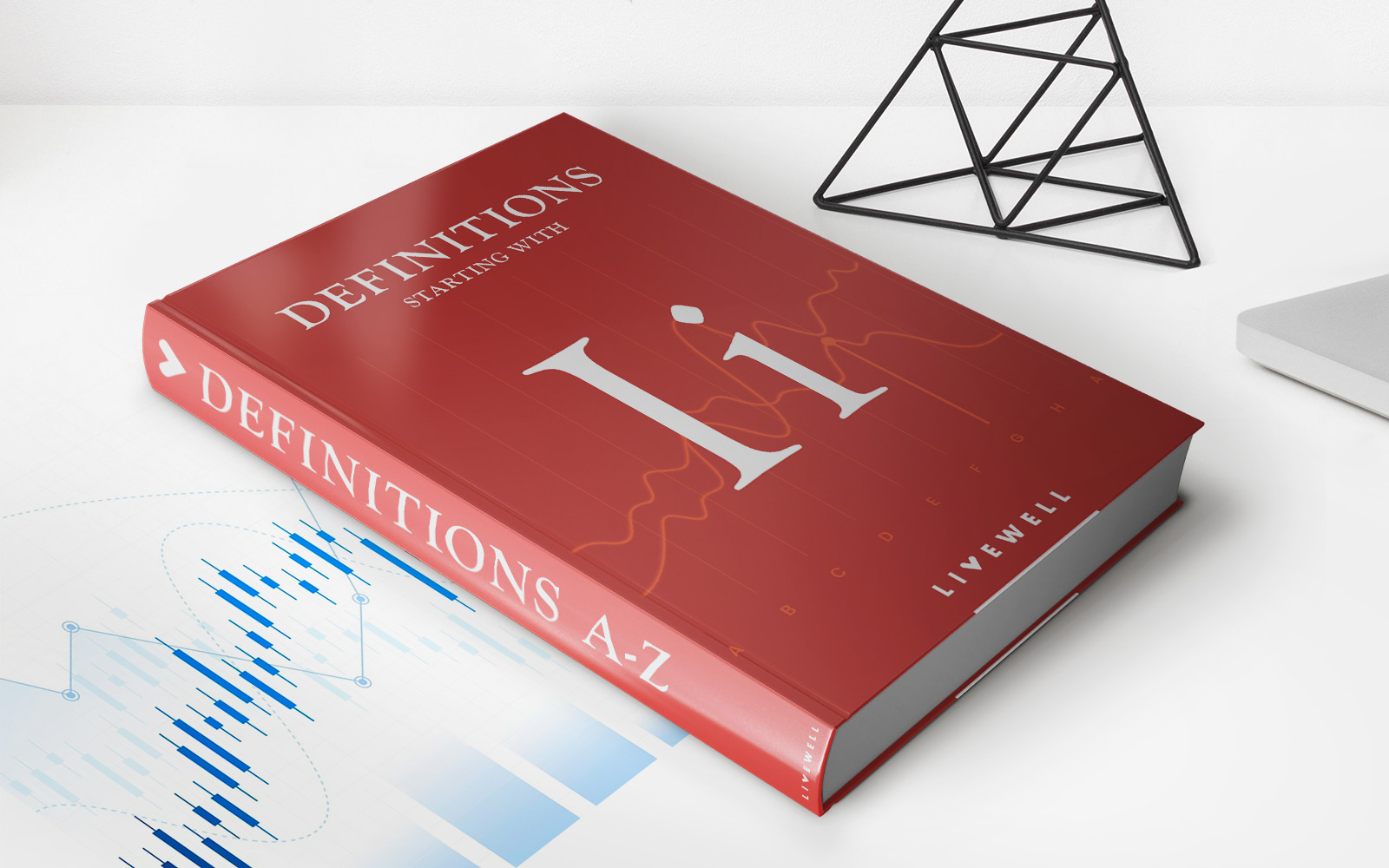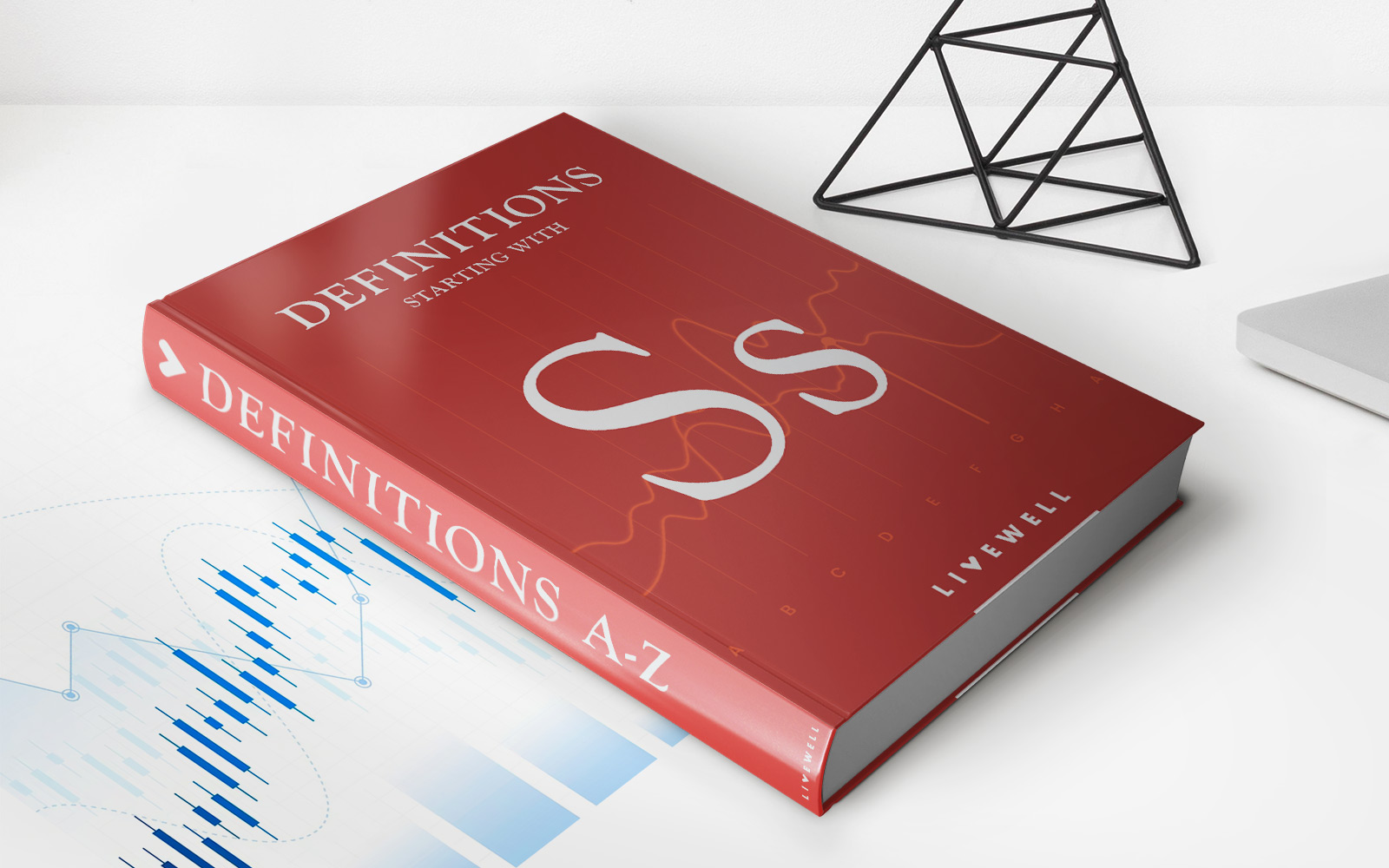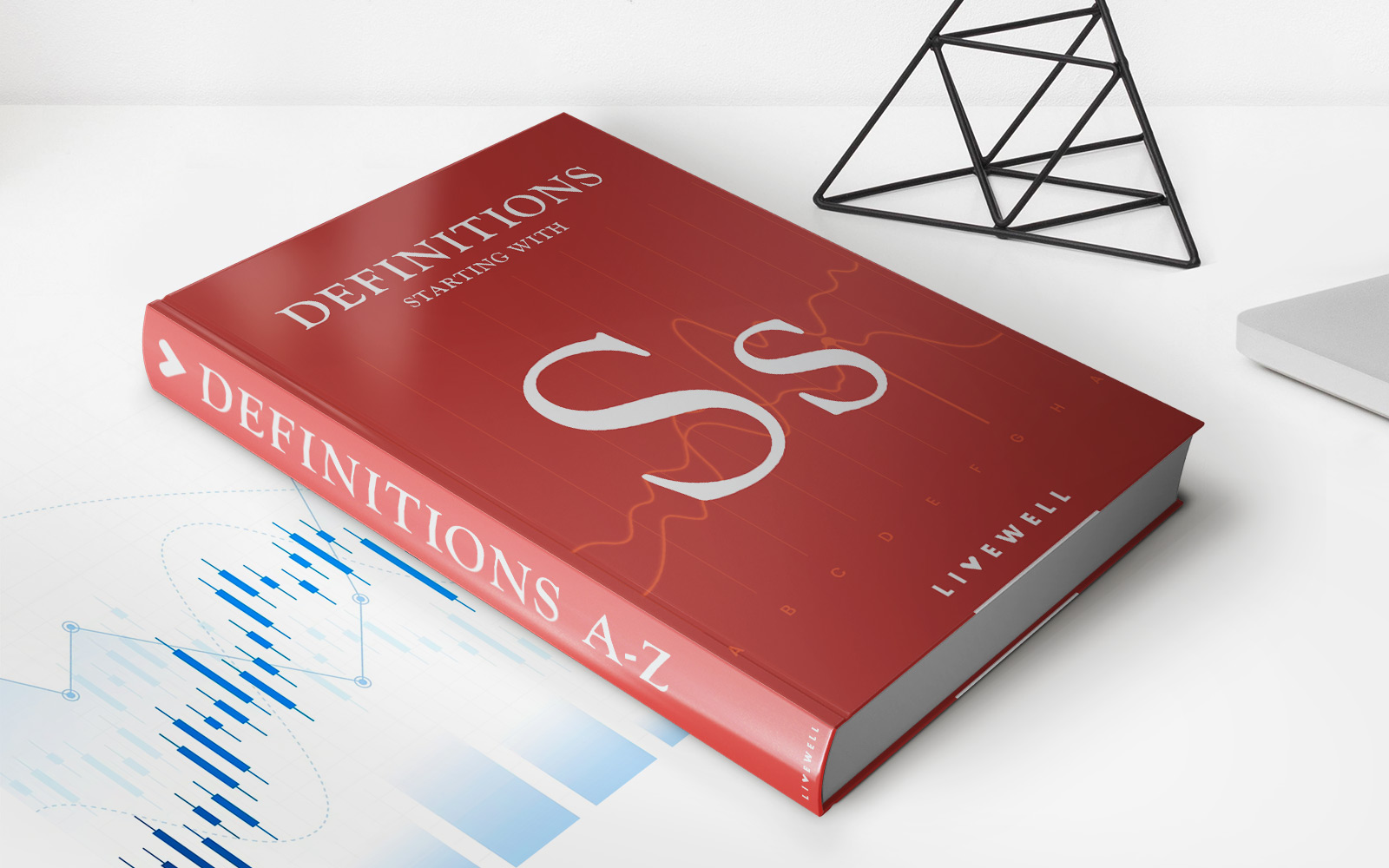Home>Finance>What Effect Does Leasing Have On A Firms Capital Structure


Finance
What Effect Does Leasing Have On A Firms Capital Structure
Modified: December 30, 2023
Lease financing can significantly impact a firm's capital structure, influencing its financial stability and strategic decision-making. Discover the implications of leasing in the finance industry and how it affects businesses.
(Many of the links in this article redirect to a specific reviewed product. Your purchase of these products through affiliate links helps to generate commission for LiveWell, at no extra cost. Learn more)
Table of Contents
- Introduction
- Definition of Leasing
- Capital Structure of a Firm
- How Leasing Affects Capital Structure
- Advantages of Leasing on Capital Structure
- Disadvantages of Leasing on Capital Structure
- Factors to Consider when Analyzing the Effects of Leasing on Capital Structure
- Case Studies on The Effect of Leasing on Capital Structure
- Conclusion
Introduction
When it comes to managing their finances and making strategic decisions, companies must carefully consider their capital structure. The capital structure of a firm refers to the way it finances its operations and investments through a combination of equity (shares) and debt (loans and bonds). It represents how the company raises and utilizes funds to support its growth and profitability.
Leasing is one method that companies often utilize to fulfill their operational and investment needs. Leasing involves the use of a specific asset, such as machinery, equipment, or office space, without the company actually owning it. Instead, the company pays regular rental payments to the lessor, who owns the asset.
In this article, we will explore the effect of leasing on a firm’s capital structure. We will delve into the advantages and disadvantages of leasing and discuss the key factors that need to be considered when analyzing the impact of leasing on capital structure. Additionally, we will examine real-life case studies to provide practical insights into how leasing decisions can influence a company’s financial structure.
Definition of Leasing
Leasing is a financial arrangement in which a company obtains the right to use a particular asset for a specified period by making regular rental payments to the lessor. It is essentially a form of renting, but in a business context. The lessor, who owns the asset, allows the lessee (the company) to use the asset in exchange for periodic payments.
Leases can cover a wide range of assets, including machinery, equipment, vehicles, real estate, and even intangible assets like patents or software. The terms of a lease agreement are defined in a contract, which outlines the duration of the lease, the amount of the rental payments, and any other relevant terms and conditions.
There are two main types of leases: operating leases and financial leases. Operating leases are generally shorter-term agreements in which the lessor retains ownership of the asset throughout the lease term. They are often used to fulfill short-term or temporary needs and are more similar to traditional rental agreements. Financial leases, on the other hand, are longer-term agreements that resemble loans. The lessee has the option to purchase the asset at the end of the lease term and usually carries the responsibility for maintenance and repair costs.
Leasing provides companies with the opportunity to access and utilize assets without the need for a large upfront capital investment. This can be especially beneficial for businesses that require expensive equipment or facilities but prefer to avoid the financial burden and potential risk of ownership.
Overall, leasing offers flexibility, allowing companies to easily upgrade or change equipment as their needs evolve. It can also provide tax advantages, as lease payments are often considered operational expenses and can be deducted from taxable income. However, it is important for companies to carefully evaluate the financial implications of leasing versus purchasing and consider the impact on their capital structure before making a leasing decision.
Capital Structure of a Firm
The capital structure of a firm refers to the way in which it finances its operations and investments. It consists of a combination of equity and debt, which determines the proportion of ownership and the level of financial leverage within the company.
Equity represents ownership in the company, typically in the form of common stock. It is provided by shareholders who invest their capital in the business. Equity financing allows companies to raise funds without incurring debt obligations. However, it dilutes ownership as more shares are issued and distributed among investors.
Debt, on the other hand, refers to borrowed funds that must be repaid over time. It includes bank loans, bonds, and other forms of debt financing. Debt holders are creditors who lend money to the company in exchange for regular interest payments and the return of the principal amount at maturity. Unlike equity, debt financing does not result in a loss of ownership control but adds financial obligations and interest expenses.
The capital structure decision is crucial for companies as it affects their risk profile, cost of capital, and financial flexibility. The mix of equity and debt financing influences the company’s ability to generate earnings and eventually return value to its shareholders.
A company can have various capital structures, ranging from conservative to aggressive. A conservative capital structure entails a higher proportion of equity relative to debt. This approach is generally associated with lower financial risk, as the company relies less on borrowed funds, which can lead to lower interest expenses and a more stable cash flow. However, it may limit the firm’s ability to take advantage of growth opportunities due to the lower leverage.
On the other hand, an aggressive capital structure involves a higher level of debt compared to equity. This approach allows the company to increase its leverage and potentially amplify returns on equity through financial leverage. However, it also exposes the business to a higher degree of financial risk, as a higher debt burden requires regular interest payments and may limit the company’s ability to handle economic downturns.
The optimal capital structure for a firm depends on various factors, including industry dynamics, market conditions, profitability, growth prospects, and risk tolerance. Companies must strike a balance between the advantages of debt financing, such as tax benefits and financial leverage, and the risks associated with it, such as interest rate fluctuations and debt repayment obligations.
Leasing plays a significant role in the capital structure decision as it represents an alternative source of financing. By utilizing leases, companies can adjust their capital structure by shifting from debt financing to operating leases, thereby reducing their debt-to-equity ratio. However, it is essential to carefully evaluate the impact of leasing on the overall financial structure before making any decisions.
How Leasing Affects Capital Structure
Leasing can have a significant impact on a firm’s capital structure due to its unique characteristics and financial implications. Here are some key ways in which leasing affects the capital structure of a company:
1. Debt Ratio: Leasing enables a company to obtain the use of assets without purchasing them outright. As a result, the company can reduce its debt ratios since leased assets do not appear as liabilities on the balance sheet. This reduction in debt can lead to a more favorable debt-to-equity ratio and lower financial risk.
2. Off-Balance Sheet Financing: Operating leases, in particular, are often considered off-balance sheet financing. Since the leased assets are not owned by the company, they are not recorded as assets or liabilities on the balance sheet. This can make the company appear less leveraged than it actually is, potentially improving its perceived creditworthiness and borrowing capacity.
3. Cash Flow Impact: Leasing can have a positive impact on a company’s cash flow, as lease payments are typically spread out over the lease term. This can free up available cash for other investment opportunities or working capital needs. It can also provide predictable and stable cash outflows, enabling better financial planning and budgeting.
4. Flexibility: Leasing offers flexibility in terms of acquiring and utilizing assets. Companies can adjust their lease agreements based on their short-term needs, allowing them to easily upgrade or change equipment and technology. This flexibility can be beneficial in rapidly evolving industries where staying competitive requires the latest tools and machinery.
5. Tax Implications: Lease payments are often considered operational expenses and can be deducted from taxable income. This can result in lower taxable income and reduced tax liabilities for the company. Additionally, certain tax incentives or lease structures can further enhance the tax benefits of leasing, creating potential cost savings.
While leasing provides several advantages, it is important to note that leasing also carries some drawbacks that can impact a firm’s capital structure. These include:
1. Higher Costs: Lease payments may be higher compared to the cost of owning an asset outright. Companies need to carefully evaluate the financial implications and consider the total cost of leasing over the useful life of the asset. In some cases, it may be more cost-effective to purchase the asset rather than lease it.
2. Limited Asset Ownership: Leasing means that the company does not own the asset. This can limit the asset’s long-term value and potential for resale. It also means that the company does not benefit from any appreciation in the asset’s value.
3. Long-Term Commitments: Financial leases can involve longer-term commitments, often with penalties for early termination or changes to the lease agreement. This can restrict the company’s flexibility and ability to adapt to changing market conditions.
Overall, leasing has both positive and negative effects on a firm’s capital structure. It offers opportunities to reduce debt, improve cash flow, and enhance flexibility, but it also introduces additional costs and limitations. Companies must carefully assess the impact of leasing on their overall financial structure and align it with their strategic objectives and risk tolerance.
Advantages of Leasing on Capital Structure
Leasing offers several advantages that can positively impact a firm’s capital structure. Here are some key advantages of leasing:
1. Reduced Debt Levels: One of the significant advantages of leasing is that it allows companies to finance their operations without taking on significant amounts of debt. By leasing assets instead of purchasing them, companies can avoid the need for large upfront cash outlays or expensive loans. This reduction in debt levels can improve the company’s debt-to-equity ratio and lower financial risk.
2. Off-Balance Sheet Financing: Operating leases, in particular, are considered off-balance sheet financing. Since leased assets are not recorded as liabilities on the balance sheet, they do not affect the debt ratio or leverage of the company. This can be advantageous for companies looking to maintain a healthier capital structure and reduce the perceived financial risk.
3. Improved Cash Flow: Leasing can improve a company’s cash flow by spreading out the cost of assets over time. Instead of making a large upfront payment to purchase an asset, the company can make regular lease payments. This allows for a more manageable cash flow, as lease payments can be aligned with the revenue generated from utilizing the leased assets. The improved cash flow can provide the company with greater financial flexibility in managing its operations and investments.
4. Tax Benefits: Leasing can offer tax benefits for companies. Lease payments are generally considered operational expenses and can be tax-deductible. This can result in lower taxable income and reduced tax liabilities, providing potential cost savings. Additionally, some lease structures or tax incentives may further enhance the tax benefits of leasing, enabling even greater savings for the company.
5. Flexibility and Upgrading Options: Leasing provides companies with flexibility in adapting to changing business needs. Leases are typically structured for specific durations, allowing companies to adjust their assets based on short-term requirements. This flexibility enables companies to easily upgrade or change equipment and technology as needed, without the hassle and cost of resale or disposal of owned assets. This agility is particularly beneficial in industries where technological advancements and innovation are rapid.
6. Risk Mitigation: Leasing can help mitigate certain risks associated with asset ownership. For example, if the leased asset becomes obsolete or requires significant maintenance or repairs, the responsibility for these costs often lies with the lessor, relieving the lessee of the financial burden. This risk mitigation can protect the capital structure of the company by avoiding unforeseen expenses that could erode profits and increase financial risk.
Overall, the advantages of leasing on a firm’s capital structure include reduced debt levels, off-balance sheet financing, improved cash flow, tax benefits, flexibility, and risk mitigation. However, it is important for companies to carefully evaluate these advantages in light of their specific financial objectives and circumstances to ensure that leasing aligns with their long-term strategic goals.
Disadvantages of Leasing on Capital Structure
While leasing offers several advantages, it also comes with certain disadvantages that can impact a firm’s capital structure. Here are some key disadvantages of leasing:
1. Higher Costs: Lease payments may be higher compared to the cost of owning an asset outright. Over the long term, the total cost of leasing can be substantially more than the cost of purchasing the asset. This can result in increased operational expenses for the company, potentially affecting its profitability and financial stability.
2. Limited Asset Ownership: When a company leases an asset, it does not own it. This means that the company does not benefit from any potential appreciation in the asset’s value. Additionally, the company may be limited in terms of leveraging the asset for collateral or other financing purposes. Moreover, if the company relies heavily on leasing instead of owning assets, it may have limited tangible assets on its balance sheet, which can impact its overall financial position.
3. Long-Term Commitments: Financial leases often involve long-term commitments, typically spanning several years. Breaking or terminating a lease agreement prematurely can result in penalties or additional costs. This lack of flexibility can hinder a company’s ability to adapt to changing market conditions or unexpected business circumstances, potentially impacting its operational efficiency and financial performance.
4. Risk of Obsolescence: Leased assets may become obsolete over time, especially in industries with rapidly changing technology or evolving market demands. If the company leases these assets, it may face a higher risk of using outdated or inefficient equipment. This can negatively affect the company’s competitiveness and productivity, ultimately impacting its profitability and long-term financial stability.
5. Dependency on External Financing: Companies that heavily rely on leasing for their asset needs may become dependent on external financing from lessors. This reliance can limit the company’s ability to secure alternative financing sources, such as loans or equity investments, which could potentially offer more favorable terms or flexibility. Additionally, if the lessor or leasing market experiences disruptions or becomes less favorable, the company may struggle to find suitable leasing options, hindering its operational continuity.
6. Limited Control: When a company leases an asset, it has limited control over its usage and customization. The terms of the lease agreement may restrict modifications or alterations to the asset, limiting the company’s ability to fully customize it to its specific needs. This lack of control can impact the company’s operational efficiency and competitiveness in certain industries where customized assets are crucial.
It is important for companies to carefully weigh the disadvantages of leasing on their capital structure against their unique financial goals and circumstances. While leasing offers certain advantages, these disadvantages must be considered and evaluated to make informed decisions that align with the company’s long-term financial strategy.
Factors to Consider when Analyzing the Effects of Leasing on Capital Structure
When analyzing the effects of leasing on a firm’s capital structure, several factors should be taken into consideration. These factors can help evaluate the impact of leasing decisions on the company’s financial position, risk profile, and overall capital structure. Here are some key factors to consider:
1. Lease vs. Purchase Analysis: A thorough analysis should be conducted to compare the financial implications of leasing versus purchasing an asset. This analysis should consider factors such as the total cost of leasing, including lease payments and other associated costs, compared to the cost of purchasing the asset. It should also examine the potential long-term value and usage requirements of the asset before making a decision.
2. Lease Term and Structure: The length of the lease term and the lease structure can have implications for the company’s capital structure. Longer lease terms can create a more extended financial commitment and potentially impact the company’s ability to adjust its asset portfolio. Additionally, the terms of the lease, such as renewal options, buyout clauses, and restrictions on modifications, should be carefully evaluated to understand their impact on the company’s flexibility and control over its assets.
3. Impact on Debt-to-Equity Ratio: Leasing can affect a company’s debt-to-equity ratio, as lease liabilities are typically not considered as debt. Analyzing the impact of leasing on this ratio is essential for assessing the overall financial risk of the company. It is vital to evaluate whether the potential reduction in debt levels by leasing assets aligns with the company’s financial objectives and risk tolerance.
4. Cash Flow Considerations: Leasing can impact a company’s cash flow by influencing its operating expenses and cash outflows. Analyzing the lease payments in relation to the company’s revenue and cash flow projections is crucial. It is essential to determine whether the lease payments can be comfortably accommodated within the company’s cash flow, without compromising its ability to meet other financial obligations or invest in growth opportunities.
5. Tax Implications: The tax benefits and implications of leasing should be carefully evaluated. Lease payments are often tax-deductible as operational expenses, which can provide tax advantages for companies. Understanding the specific tax rules and regulations regarding leasing in the company’s jurisdiction is critical for determining the overall financial impact of leasing on its capital structure.
6. Industry Dynamics: The industry in which the company operates plays a significant role in analyzing the effects of leasing on its capital structure. Some industries, such as technology or healthcare, may have rapidly evolving asset requirements, making leasing an attractive option for maintaining competitiveness and staying up to date with the latest equipment. Understanding the specific needs and dynamics of the industry can help assess the suitability and advantages of leasing in the given context.
7. Risk Assessment: Companies should assess the risks associated with leasing, such as potential asset obsolescence, lease renewal or termination costs, and dependence on external lessors. Understanding and mitigating these risks are crucial for minimizing any adverse effects on the company’s financial structure and stability.
By carefully considering these factors, companies can make informed decisions about the effects of leasing on their capital structure. It is crucial to align leasing decisions with the company’s long-term financial goals, risk appetite, and overall strategic objectives to optimize their capital structure and financial performance.
Case Studies on The Effect of Leasing on Capital Structure
To gain practical insights into the effect of leasing on capital structure, let’s examine a few case studies:
Case Study 1: Company A – Technology Start-up: Company A is a technology start-up that specializes in software development. Due to its rapidly evolving industry, the company relies heavily on cutting-edge technology to stay competitive. Instead of purchasing the necessary equipment, Company A decides to lease the required hardware and software. By leasing, the company can conserve its cash flow, reduce its debt-to-equity ratio, and maintain flexibility in upgrading its technology as needed. Leasing allows Company A to allocate its capital towards research and development, marketing, and talent acquisition, which are integral for its growth and success. The lease structure also allows for shorter terms, enabling the company to adapt to changing technological needs more efficiently.
Case Study 2: Company B – Manufacturing Firm: Company B is a thriving manufacturing company that needs new machinery to expand its production capacity. After analyzing the financial implications, Company B decides to purchase the equipment using a mix of debt and equity financing. Although leasing was considered as an option, purchasing the machinery allows Company B to fully own the assets, benefit from any future appreciation in their value, and have complete control over customization and repairs. Additionally, Company B has a strong balance sheet and can easily handle the debt obligations incurred from the loan. By owning the assets, Company B maintains a higher level of tangible assets on its balance sheet, improving its overall financial position and capital structure.
Case Study 3: Company C – Retail Chain: Company C operates a chain of retail stores and faces intense competition in the market. To expand its footprint and revenue, the company decides to open new stores in prime locations. Instead of purchasing the real estate, Company C enters into long-term leases for the store spaces. Leasing allows the company to avoid significant upfront investments in owning property, reduces its debt levels, and provides flexibility in scaling its operations. The off-balance sheet financing aspect of leasing also improves the company’s debt-to-equity ratio and enhances its perceived creditworthiness to potential investors and lenders.
These case studies illustrate how leasing can have varying effects on capital structure depending on the specific circumstances and industry dynamics. While leasing may be advantageous for technology start-ups and retail chains, manufacturing firms might opt for ownership to maintain control and asset value. Ultimately, companies should carefully consider their unique needs, financial goals, and risk tolerance when deciding between leasing and purchasing to optimize their capital structure and support their long-term growth objectives.
Conclusion
The decision to lease or purchase assets has a significant impact on a firm’s capital structure. Leasing offers advantages such as reduced debt levels, improved cash flow, tax benefits, and flexibility. It allows companies to access and utilize assets without making significant upfront investments. Leasing can also be considered off-balance sheet financing, potentially enhancing the company’s perceived creditworthiness. However, leasing also comes with disadvantages, including higher costs, limited asset ownership, and long-term commitments.
When analyzing the effects of leasing on capital structure, companies must consider factors such as lease vs. purchase analysis, lease term and structure, impact on debt-to-equity ratio, cash flow considerations, tax implications, industry dynamics, and risk assessment. These factors help evaluate the financial implications, risks, and benefits of leasing on the company’s capital structure and overall financial performance.
Real-life case studies further highlight the impact of leasing on capital structure. These case studies demonstrate how leasing can be advantageous for companies in technology-focused industries, offering flexibility, cost savings, and the ability to stay up to date with the latest equipment. However, they also show that ownership may be preferable for companies in manufacturing or retail sectors, providing them with control, asset value, and a stronger balance sheet.
In conclusion, each company must carefully evaluate its specific needs, financial goals, and risk tolerance when considering leasing as a financing option. The impact on capital structure should be evaluated holistically, taking into account the advantages and disadvantages of leasing in relation to the company’s unique circumstances. By doing so, companies can make informed decisions that optimize their capital structure, support their growth strategies, and ultimately enhance their long-term financial success.














